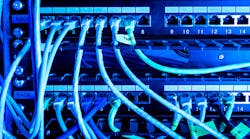As technologists, it’s hard not to be attracted to the latest cutting-edge control systems with myriad features and capabilities. We should be aware of those new advances in technology, but they are constantly changing with better capabilities.
Just like when shopping for a new car or laptop, at some point we must make a decision and actually buy something. And many of those technology purchase decisions were made years or even decades ago. In a way, just as all cars on the road are used cars, all installed control systems are legacy, some just more so than others.
Try convincing management to bring down an operating—read: money-making—line or entire factory to install a new system simply for the sake of having the latest and greatest, and you will hear some version of the old phrase, “If it ain’t broke, don’t fix it.”
However, adding Internet connectivity to existing legacy control systems enables many of the operational, monitoring and predictive maintenance capabilities of the Industrial Internet of Things (IIoT) by way of harvesting key operational data and sending it to upper-level systems for analysis.
Adding this new connectivity can come without all the cost, risk or downtime required from installing a completely new architecture. The challenge of pulling data from legacy systems stems from the very nature of those installed systems themselves.
Until the past decade or so, PLCs and PACs may not have even had an Ethernet port onboard. The programming port may have been a simple serial port, and the fieldbus may have been one of many different non-routable serial protocols. Or perhaps field devices were wired directly to I/O option cards. This makes the entire system a black box to the outside world with all the data locked up inside.
So, given these limitations of installed legacy systems, how can they be modified to have Ethernet connectivity in order to achieve at least some of the benefits of IIoT?
Change controller to Ethernet-capable version
One of the easiest ways of adding Ethernet connectivity, and thus Internet data access, to an existing system is to update the controller to a newer version with an onboard Ethernet port. This will depend on the vendor, but many offer newer versions of their older controllers that may even be programmed and debugged with the same tools and run the same code with minimal changes. Access to the data of interest may be polled by the upper-level system or written to the port by the controller with just a few instructions in the controller’s code.
Add Ethernet port to backplane-based controller
Similar to the controller example, if the legacy system is backplane-based, such as virtual machine environment (VME), industry standard architecture (ISA) or peripheral component interconnect (PCI) bus for PC-based systems, or proprietary backplanes for various PLC brands, Ethernet expansion cards may be available to slide into open card slots.
If there are no open slots, usually finding a backplane with more slots is not that difficult and will not impact the controller code. Messaging instructions in the program or backplane drivers access the data of interest and pass it to the Ethernet card, which in turn routes it to the upper-level systems.
Converters
Several companies have an expansive offering of converters that are basically Swiss Army knives of communication protocol translation. These converters can be configured or come pre-configured to convert specific data fields from any number of serial or other protocols to another, which can include Internet protocols.
With this type of converter, data objects in the legacy fieldbus can each be converted to a message in the Internet protocol and sent to the upper-level enterprise levels. The converter is invisible to the legacy network, and no programming or performance impacts should be anticipated.
Edge devices
Edge devices are a relatively new offering and can be thought of as IoT-specific protocol converters, which can collect data in the legacy fieldbus system and send it either to the upper-level enterprise system or even to the cloud directly. They can communicate via wired or wireless Internet protocols or both. One of the most attractive features of edge devices is that they typically can buffer large amounts of data. In the event of an Internet network outage or crash, data collection and storage can continue until the network is restored, then all buffered data is sent up to the enterprise system or cloud for analysis.
IoT remote I/O modules
Lastly, several companies now make IoT-ready remote I/O modules in various signal types that can be either installed in parallel with existing PLC I/O to bring data into the IIoT realm or simply added as new I/O of interest to the cloud or enterprise levels and remote monitoring. These modules offer either wireless cloud connectivity or wired Internet access and help to accomplish IIoT data harvesting on legacy systems.




